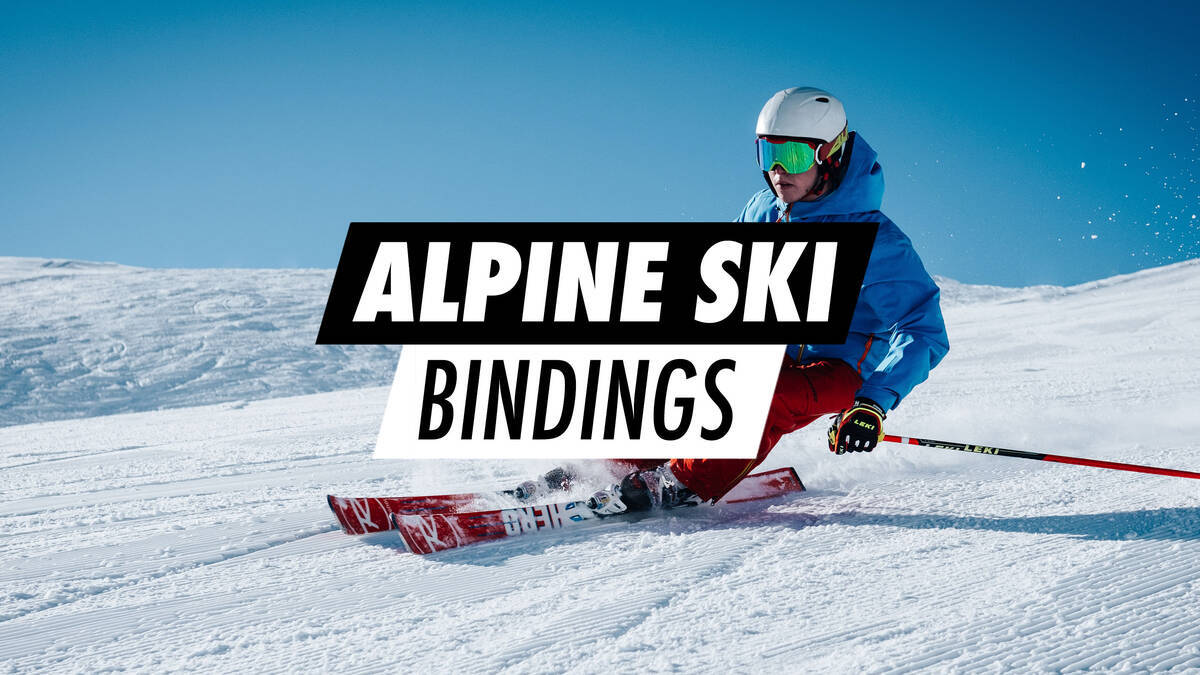Buying alpine ski bindings
What is the alpine ski binding?
Simply said, the ski binding is what keeps you connected to your skis. There is a difference between the various types of bindings - alpine, telemark, or touring. Here, we will talk about the alpine, which are mounted on piste, all mountain, race, freestyle, and freeride skis. The type of alpine bindings you choose is often determined by the style you want to ride and by your skill level.
The parts of an alpine binding
All alpine bindings are made of two main parts - toe and heel piece. On both of them, you will find the DIN system which is responsible for unlocking your bindings when you fall. More about the DIN and how to calculate the DIN value - check our DIN calculator.
The toe piece of your binding also has an anti-friction plate / anti-friction device (AFD) and horizontal wings. Those wings are responsible for releasing the boot from the binding sideways to prevent twisting injuries.

The heel piece has, on the other hand, vertical release system which prevents dislocation injuries during forward-falls. An addition to the heel piece is also the brake also called the stopper. The brake makes sure that your skis do not rush to the valley, hitting other skiers on its way, in case you fall as the binding releases from your ski boot. In all resorts, a brake system is required. Also, the brakes serve to keep your skis connected when you stack and transport them. Once you click in the boot, the brake lifts and you are ready to go.
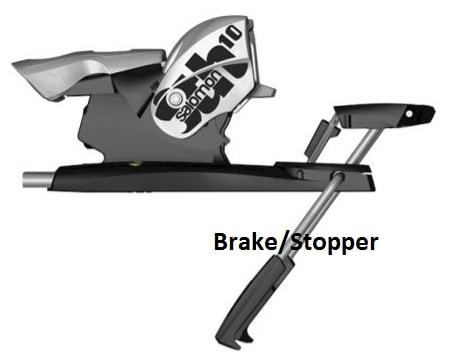
Types of alpine bindings
The major difference comes in the way they are mounted to the skis. You can either have your alpine bindings pre-mounted by the manufacturer, which means they have an already optimal pre-setting, or buy them separately from the skis. If the bindings are not already mounted, there are two other options - track mounted or drill mounted.
Track mounted
Track mounted bindings are attached to a plate that has been drilled onto the ski by the manufacturer. Then you just need to pick the bindings that match the plate system and slide them into place.
The advantage of track mounting is that the manufacturer picks the optimal plates so that you can get the best performance out of your skis. Another advantage is that those bindings are easy to adjust and re-adjust, say if you want to lend your skis to a friend.
Drill mounted
Drill mounted bindings are, as the name implies, drilled directly to the skis without any extra track / plate. This should be done by a professional and not at home, since special tools are required. Since those bindings are drilled and glued directly to the ski, you normally cannot adjust it lengthwise as much as the track mounted bindings. They mainly fit the skier's specific boot length.
The advantage with those though is that you can mount any binding to your skis. You do not need to consider the track system. This type of mounting is normally preferred by freeride, freestyle and touring skiers due to the freedom of choice they get in order to suit the bindings to their riding style.freeride, freestyle and touring skiers due to the freedom of choice they get in order to suit the bindings to their riding style.
What Is Alpine Ski Binding DIN / ISO?
How To Find The DIN Value
The value of the DIN (Deutsches Institut für Normung - earlier Deutsche Industrie Norm) adjustment on alpine ski bindings is indicating at what level the release of the binding shall happen. This value is also referred to as ISO. It is made for optimizing safety and managing power impacts. The binding has to manage precise release when the skier falls to avoid injuries on body points such as knees, hips etc. DIN adjustment on alpine ski bindings is indicating at what level the release of the binding shall happen. This value is also referred to as ISO. It is made for optimizing safety and managing power impacts. The binding has to manage precise release when the skier falls to avoid injuries on body points such as knees, hips etc.
It is important that the DIN value on the toe and heel binding pieces is set according to you.
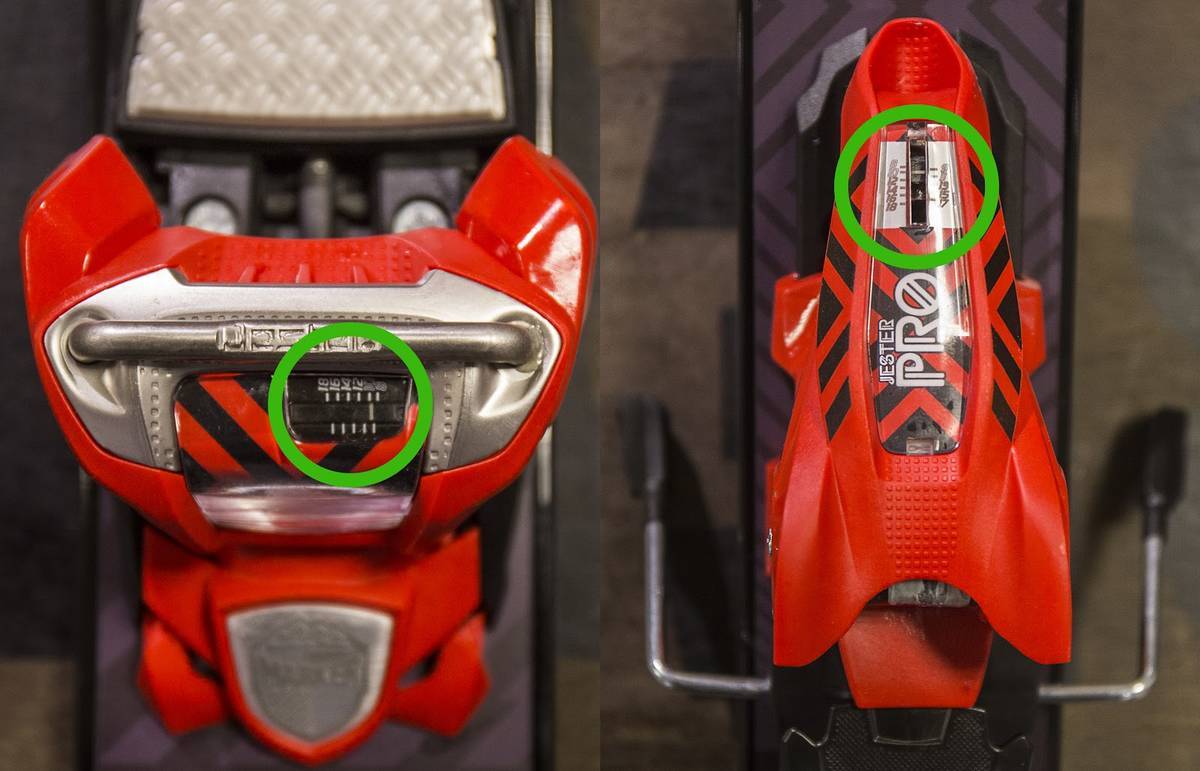
The DIN setting must be set correctly for the ski bindings for both kids and adults.
Adjusting the release setting / DIN value is done both on the toe and the heel piece of the alpine ski binding. On the bindings, you will find the specific DIN value interval. This way it is possible to adjust the release (DIN value) so it fit your skills, weight, height, and age.
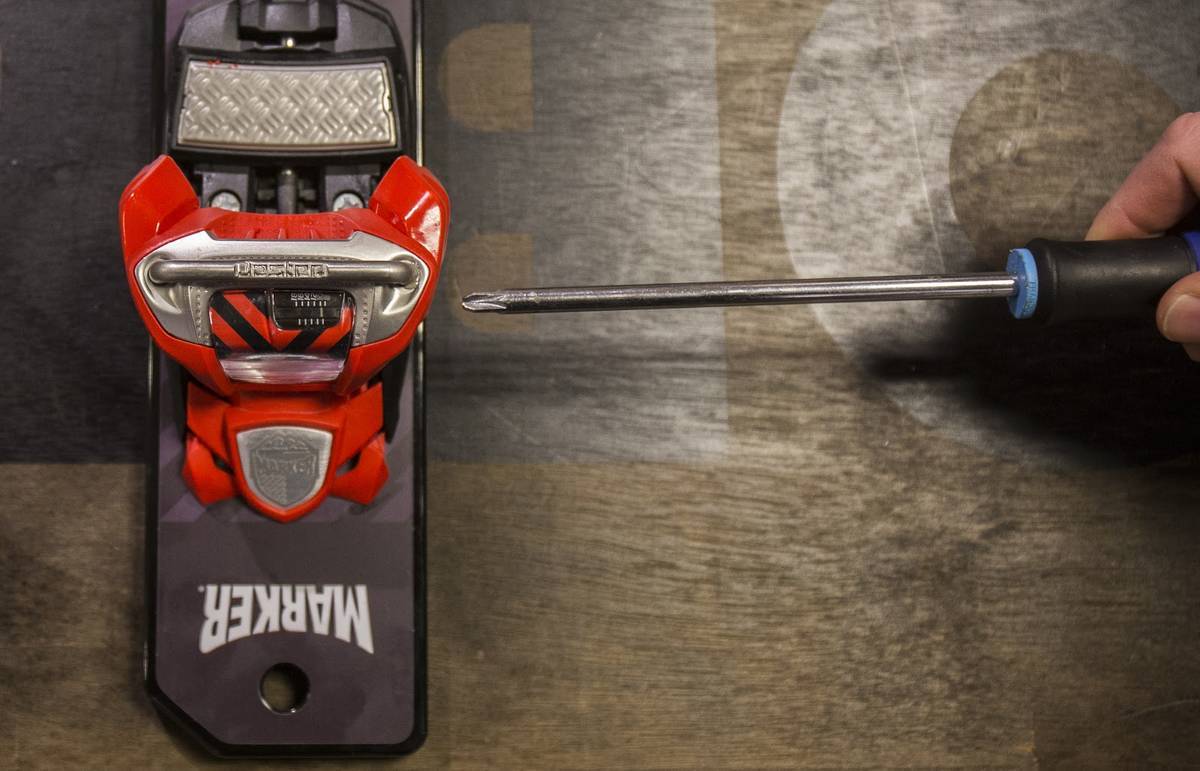
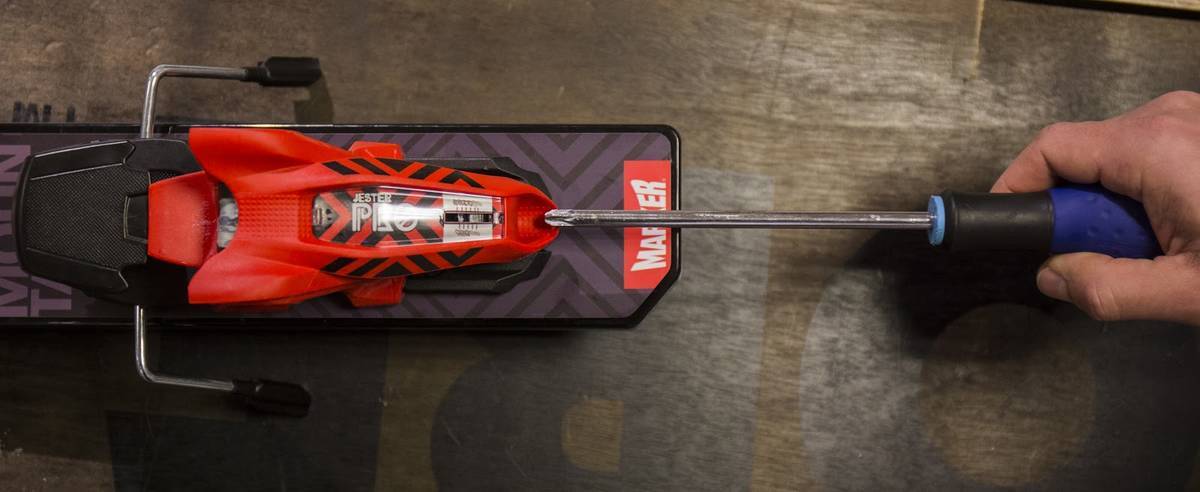
We help you to make the right DIN ski binding adjustment
When you order skis with bindings included, from us, in the checkout you will get the possibility to calculate your DIN value. This way we can mount and adjust your bindings perfectly according to your skills, weight, height, and age.
This is how the DIN calculator looks like when ordering skis and bindings from us:
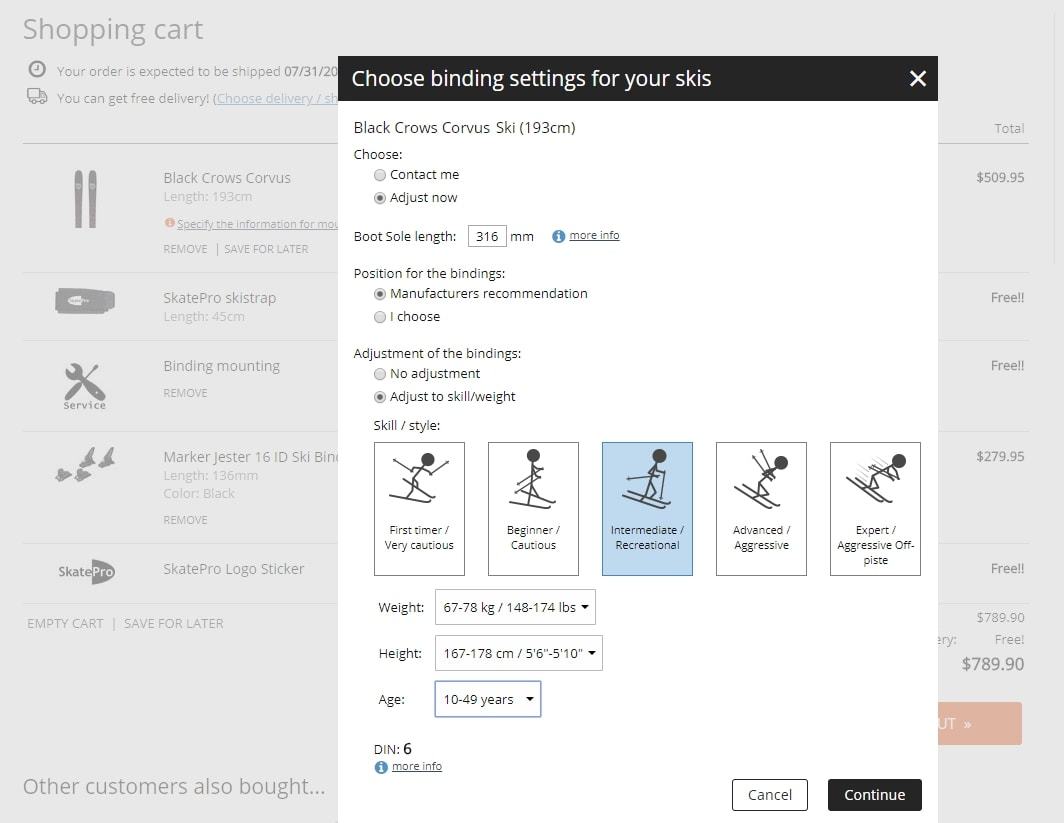
DIN / ISO
Today the standard for the mechanism of ski binding is held by the International Organization for Standardization (ISO) - the organization who has continued the standardization from Deutsches Institut für Normung (DIN).
Even though it has changed from one organization to another, the original name for this is still widely used to describe the calculations - DIN.
The ISO 11088: 2006 specifies assembly, adjustment and inspection procedures for ski binding mechanisms.
